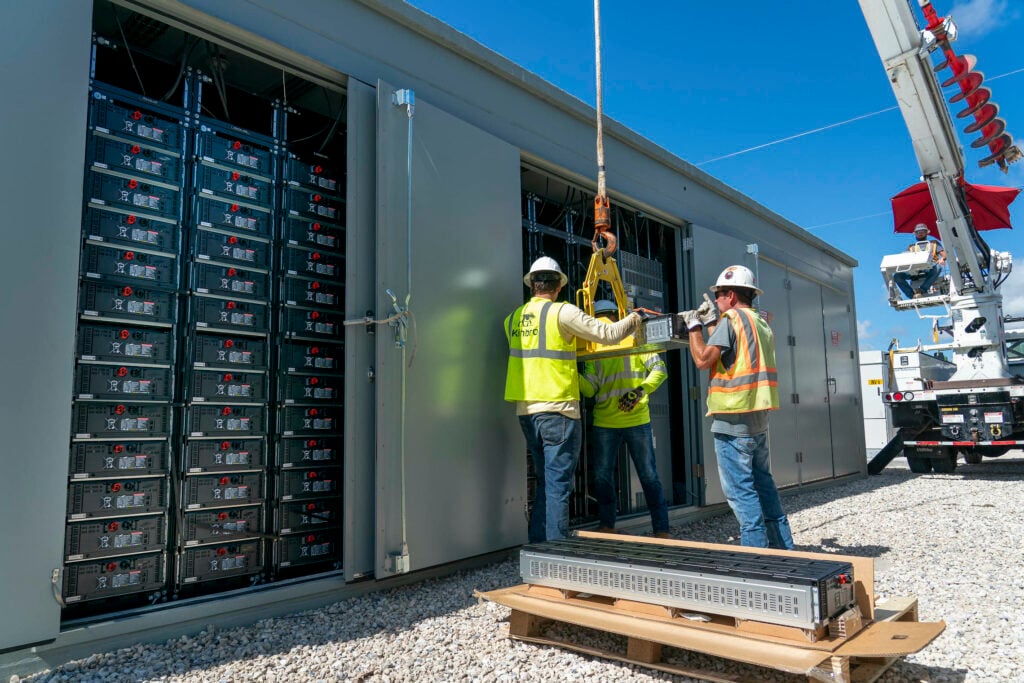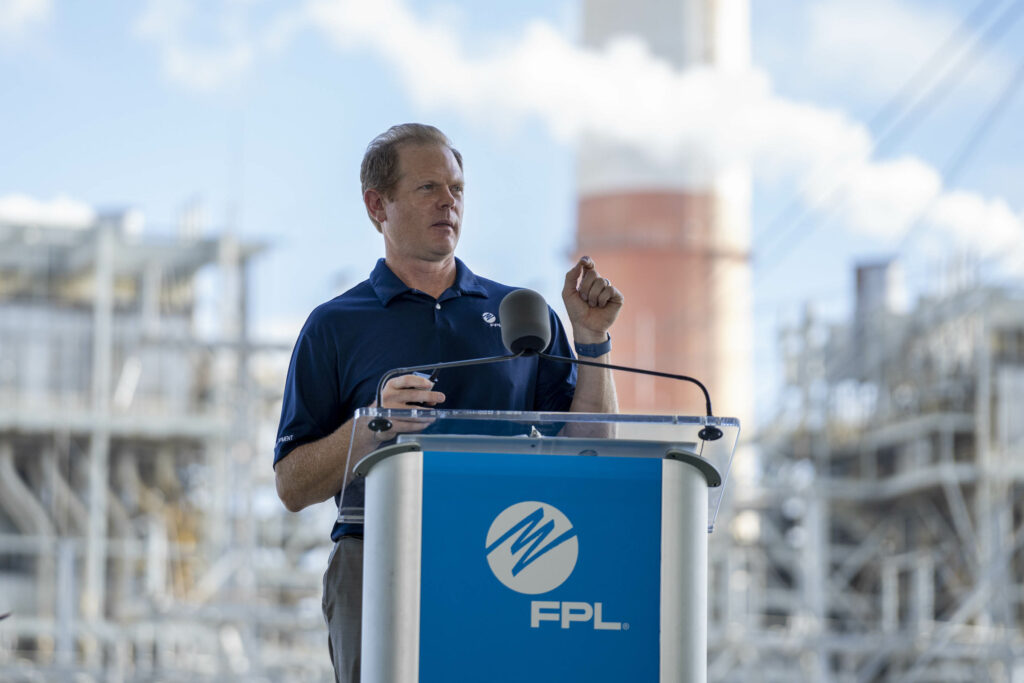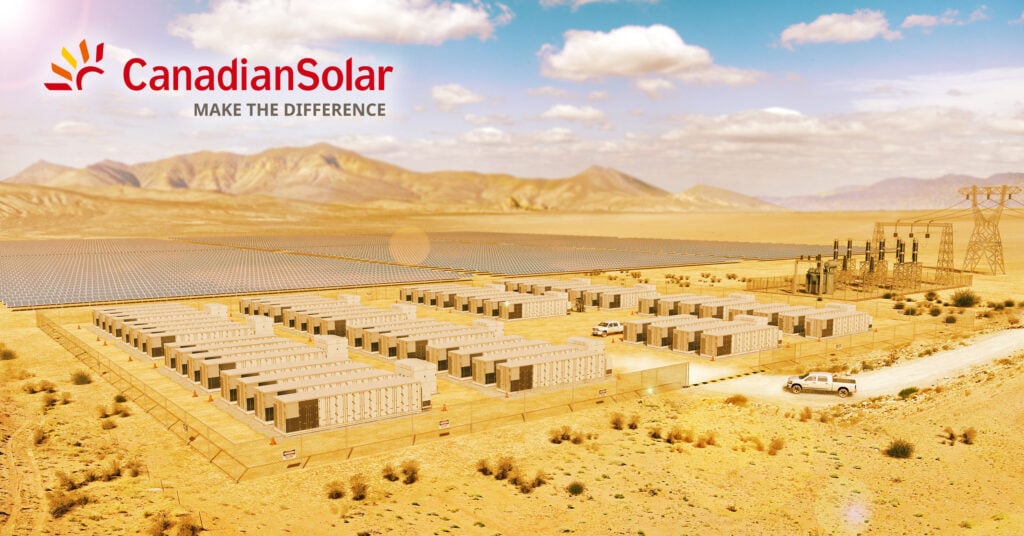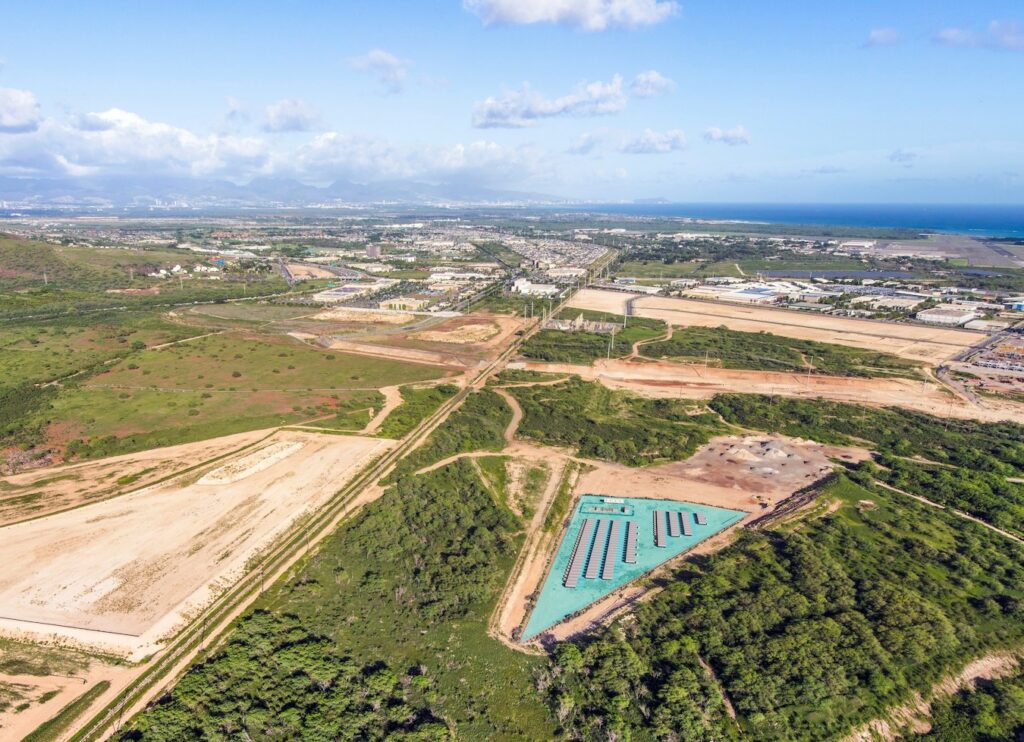
After the successful expansion of Moss Landing Energy Storage Facility — the biggest battery project in world to date — was reported last week, progress milestones have been recorded for three more major solar-plus-storage and standalone battery storage projects in California, Hawaii and Florida in the past couple of weeks.
Each of them answers a different aspect of energy system decarbonisation, from coal plant retirement on the Hawaiian island of Oahu, to natural gas retirements in Manatee County, Florida, to a California project which will directly sell dispatchable solar power to local community energy suppliers.
Enjoy 12 months of exclusive analysis
- Regular insight and analysis of the industry’s biggest developments
- In-depth interviews with the industry’s leading figures
- Annual digital subscription to the PV Tech Power journal
- Discounts on Solar Media’s portfolio of events, in-person and virtual
Manatee Energy Storage Center, Florida
The first battery modules have been installed at Manatee Energy Storage Center by Florida Power & Light (FPL) crews, with the utility and NextEra subsidiary proclaiming the project to now be three-quarters complete.
Manatee is co-located with an existing solar plant of the same name and at 409MW / 900MWh is thought to be the largest solar-charged battery storage project undertaken in the world so far. Along with a number of smaller solar and energy storage facilities in the area, it will enable FPL to take two ageing natural gas plants totalling 1,600MW offline.
Not only will that mean a reduction in greenhouse gas (GHG) emissions and air pollution, but it will also save the utility’s customers around US$100 million over the lifetime of the project by providing cheaper energy than the gas plant without the same running and fuel costs.
Construction began in February and FPL said in June that the first of 132 separate 38-tonne battery containers had been put in place. Earlier this month, FPL said in an update that 100 of those have now been installed and all 132 of the project’s inverters set, with work now underway to install over 50,000 battery modules at the site.
“In June, we said goodbye to coal by dismantling FPL’s last coal plant in Florida just as we surpassed 40% of the way toward completing our ’30-by-30’ plan to install 30 million solar panels by 2030,” FPL president and CEO Eric Silagy said.
“Soon, the world’s largest solar-powered battery will begin serving customers, and we’ll turn our attention to an innovative green hydrogen pilot project – which could unlock the potential for a 100% carbon-free energy future.”
FPL aims to install an additional 700MW of battery storage between now and 2030 in its service area.

Slate, California

In California, construction began in January this year on Slate, a 300MW solar PV plant with 140.25MW / 561MWh battery energy storage, from which energy will be sold to two community choice aggregator (CCA) energy suppliers and three other off-takers.
The project in California’s Kern County was bought by Goldman Sachs Renewable Power (GSRP) from its developer, Canadian Solar subsidiary Recurrent Energy at the start of 2021. French financial services and banking firm Natixis said last week that it had recently closed two major financing deals for the project.
One was US$515.9 million of senior secured credit facilities for what will be one of the biggest solar-plus-storage projects in the world to date, brokered in June. The other deal was a US$150 million Equity Bridge Loan signed prior to that, which will be used to fund GSRP’s equity contribution into the project.
Power purchase agreements (PPAs) for the project’s output have been signed with Silicon Valley Clean Energy and Monterey Bay Community Power, the two CCAs, along with three other off-takers. Canadian Solar said in January that those deals constitute one solar-only PPA and four solar-plus-storage PPAs. Slate is being built with Canadian Solar BiKu bifacial solar PV modules.
Kapolei Energy Storage, Hawaii

Construction began in mid-August on a 185MW / 565MWh battery energy storage system in Kapolei, on O’ahu, Hawaii.
The project, by developer Plus Power, is intended to replace Hawaii’s last remaining coal power station but the path to the start of construction had not been without obstacles. After the project won out in a competitive solicitation held by utility Hawaiian Electric which also awarded contracts to 15 other solar-plus-storage and standalone battery storage projects, a PPA was signed in September 2020 and approved by regulator Hawaiian Public Utilities Commission (PUC).
However, although it would ease the retirement of the 180MW AES Hawaii Plant, scheduled for September next year, the regulator remained concerned that, with a lack of solar build-out in time for that date, the battery plant might be charged from another fossil fuel source, oil.
That switch may only have been a temporary one until renewable resources went online, but PUC chair Jay Griffin was quoted in local newspaper Honolulu Civil Beat that going from coal to oil was “like going from cigarettes to crack”. The PUC had put down a number of conditions on the PPA’s approval in May this year, including that minimum thresholds of renewable energy must be set. Some of the other conditions that the regulator handed down were rejected by Hawaiian Electric and an agreement was eventually reached.
Local news outlet Star Advertiser said a couple of weeks ago that despite there also being some concerns around the high cost of the project among commissioners, construction began on 11 August with a groundbreaking ceremony and traditional blessing.
The system will charge during off-peak hours and times of high renewable generation and discharge during peaks in demand, as well as providing frequency response and other grid stabilising services. The Kapolei project will be Hawaii’s biggest standalone battery storage system to date and will go into service next year.
Recent figures announced by the US Energy information Administration at the Department of Energy show that some 10,000MW of new battery storage is expected to be connected to utility networks in the country from 2021 to 2023. The majority of that planned new capacity will be solar-plus-storage, with a smaller proportion of standalone battery storage and then wind-plus-storage hybrid resources.

